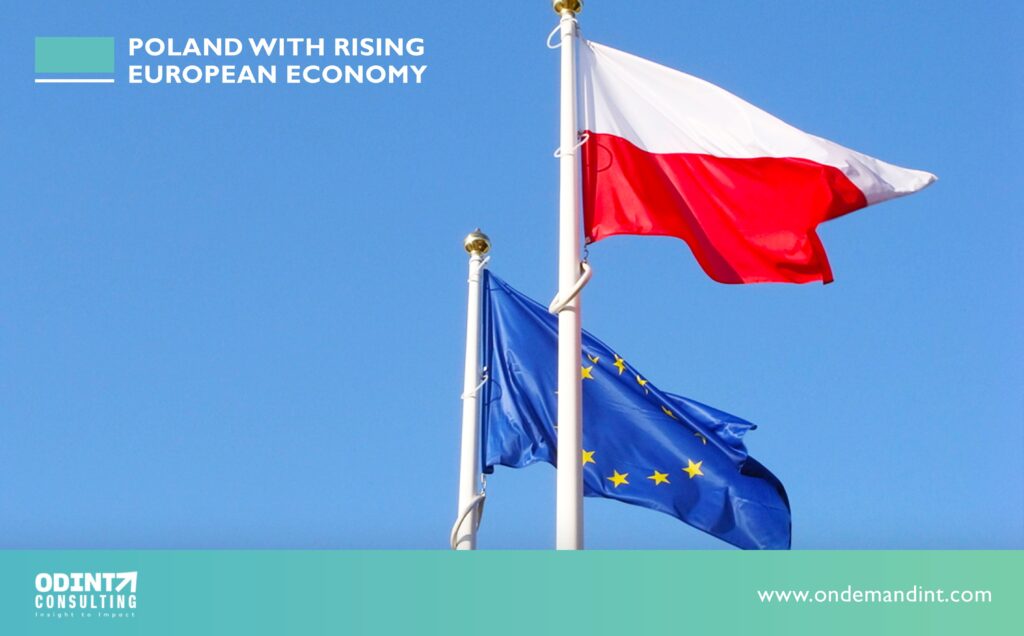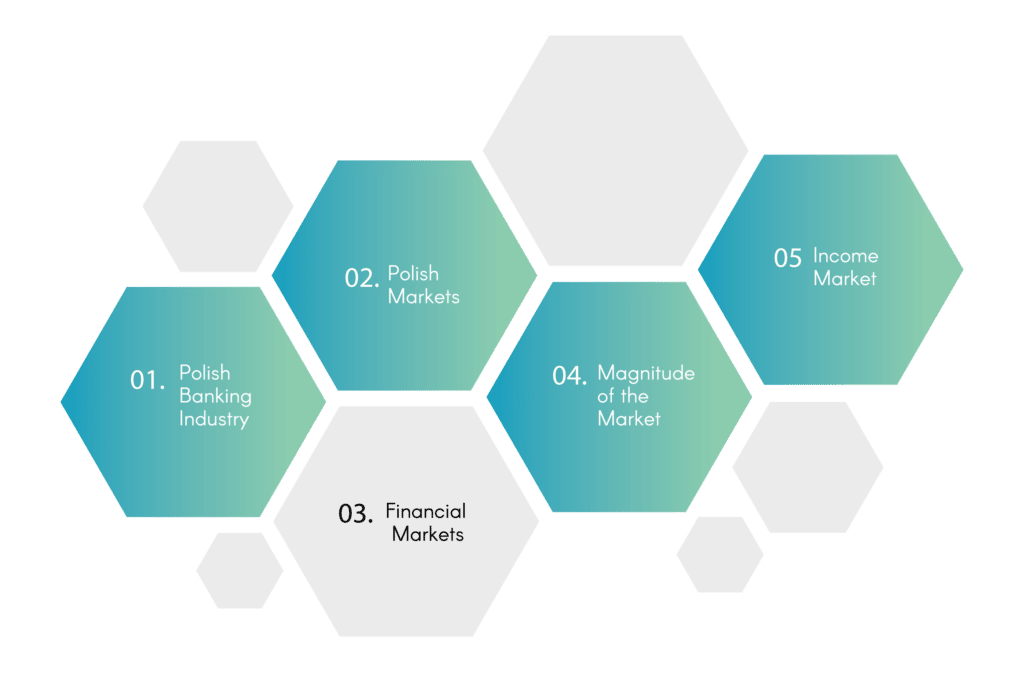
Overview: Poland with a rising European Economy
Poland with a rising European Economy, of over 38 million people is the most populous nation within Central as well as Eastern Europe (CEE).
It boosted its reputation as a steadily growing economy in the wake of the financial meltdown in which it was the sole nation within the EU to experience an increase in its economy in the year 2009. More impressively it was not only a single event. Poland with a rising European Economy has the longest-running performance in terms of cumulative growth for CEE countries from 1989.
At the time, its GDP was just $62 billion, but in 2011it had grown to eight times as much, with $514 billion. Similar trends are evident in the per-capita GDP growth, which increased from $1,625 in the year 1990 to $13,500 by 2011. Poland with rising European Economy rapid steady growth is attributed to its status to be one of the top investment destinations in Europe. A survey conducted by Ernst & Young in June found Poland as the second best investment location in Europe second only to Germany. Other surveys over the last few years have also reached similar conclusions.
What is the main attraction?
- First, the enormous size of the country’s market (by far the biggest in CEE) implies that it’s easier to find people with the right skills in sufficient quantities (especially crucial for production sites with larger sizes. locations).
- Furthermore, Poles are still in the process of catching up with regards to consumption, which means that on one hand, they’re willing to put in the work while yet, willing to spend, that’s not just an expansive, but an expanding market.
- A third reason is that many investors realize that the wages in Poland with the rising European Economy are considerably below EU averages, yet the skills they can tap into are similar to the ones they have access to within Western Europe.
- Additionally, as a member of Poland with a rising European Economy since 2004, Poland provides investors with access to this market and its proximity to Europe means lower cost of transportation and the ability to react quickly – two advantages over transport from Asia.
- This means that Poland with a rising European Economy continues to draw foreign direct investments (FDIs) and has attracted nearly EUR140bn in FDIs in 1994. Additionally, Poland is also attracting the highest value-added investment.
- This is due to the fact that its primary assets are not only labor costs that are low per hour, but it also provides highly trained workers.
- This is evident in the rapid growth of outsourcing business processes and offshoring that has occurred in the last few years. The number of businesses with service centers has increased from just the 80 mark in 2004 and nearly 300 in 2011.
- This could be an early start rather than the end. In an assessment by the United Nations Conference on Trade and Development, the city of Krakow located in the south of Poland with a rising European Economy was named the best emerging city for outsourcing globally and suggests that there will be more inflows from this kind of investment.
- Furthermore, it’s not only outsourcing of business processes that are being conducted – a growing number of companies are moving their R&D departments to Poland with the rising European Economy as well as GE, IBM, Google, Thomson Reuters, and dozens of other companies from around the world. In actual fact, R&D centers constitute a quarter of all the business service centers mentioned earlier.
Poland's Biggest Export Products
- Poland’s top export products include automobiles and their parts (12.6 percent of the total imports for 2011) machines and other mechanical devices (12.3 percent) and electrical equipment and machinery (11.3 percent).
- Other significant export categories include furniture (5.3 percent) Mineral oil and fuels (4.9 percent) as well as plastics (4.4 percent) as well as rubber and items made from rubber (2.7 percent).
- Products, such as oils, and fuels of their distillation form the largest category of imports (12.6 percent of total imports in the year 2011) followed by mechanical and machinery appliances (12 percent) as well as electrical equipment and machinery mostly consumer electronics and appliances for the home (10.1 10%).
Key Stabilizing factors

There are some crucial key factors to the economy. They are as:
Polish Banking Industry
One of the key stabilizing factors to Poland with rising European Economy and a great place to make investments are the banks. With a core capital ratio of tier one at 12.5 percent for the entire sector (and 13.5 percent in the five top five names) The Polish banking industry is among the top capitalized sectors in Europe. In the year 2011’s final report the deposit to loan ratio was 1.11 which indicates that banks are largely financed by deposits with just one-fifth of their loans being financed overseas, mostly through the loan of banks in Poland with a rising European Economy from their parent businesses. This type of financing provides stability, since the mother company is not able to take away financing from its Polish subsidiary until it has secured another source of financing to support it.
Polish Markets
The banking sector is an attractive area to invest in due to the potential for growth of the Polish market. With the housing loan rate (loans/GDP) as high as 19 percent in Poland with a rising European Economy in comparison to that of the European average of 40 percent and UK percentage of 70% which is a sign that Poland is among the countries that have the highest potential for growth. In addition in terms of 15.4 percent penetration of the corporate loan market, Poland has not been only far below the rest of the Western European countries (the UK’s corporate loan penetration was 31.1 percent in 2011 whereas Germany’s was 35.3 percent, and several smaller countries, it was higher than 50 percent) It is not far behind the rate of the regional rivals (Slovakia 23.4 percent; Hungary 24.5%). With the massive investment required to improve the infrastructure (especially within the field of energy where the investment is estimated to be in the millions of Polish Zloty over the next 10 years), There’s plenty of room to grow – for the banking sector as well as the market for corporate bonds.
Financial Markets
Financial markets are also among the many success stories of Poland’s post-communist transition. Its Warsaw Stock Exchange (WSE) is home to greater than 380 firms within the market as well as 130+ listed in New Connect, the New Connect market has emerged as one of Europe’s largest and most active markets for initial public offerings that attract a variety of firms from across the region. It attracts both businesses that are interested in being listed as well as investors due to its clear and shrewd rules.
The magnitude of the Market
Another crucial aspect is the magnitude of the market – as the largest market in the region, it is a magnet for companies who seek to raise capital to expand their business and expansion, yet find their home stock exchanges to be either insufficient or are much less suitable for their dimensions. In recent years, there have been a lot of Ukrainian food companies that are listed on the WSE which have raised millions of zloty per year. Additionally, WSE derivatives trading platform has grown to become the largest in CEE. WSE derivatives trading system has increased to become the biggest in CEE.
Income Market
Other markets for financial services that draw large numbers of buyers are interbank FX or fixed income markets. The Polish Zloty FX market is the most liquid and deepest within the area. Along with FX spots and foregoing transactions, there is also it is evident that the FX Options market has been quite active. When it comes to fixed-income instruments liquid Polish Treasury bonds make up the basis of many CEE bond portfolios. Foreign investors are constantly adding them to their portfolios motivated by Poland’s performance in the wake of the financial crisis as well as the government’s efforts to reduce deficits. The portfolio of zloty-denominated Treasury bonds owned by foreign investors has grown from less than PLN60bn in 2009 to nearly 180 billion in August 2012. This is a testament to the trust that can be placed in Polish Treasury bonds and aids in understanding the reason why Poland with a rising European Economy remains a desirable investment option.
Tips for conducting business in Poland
- Be familiar with a handful of Polish phrases, like Dzien Dobry (‘good day’ ), commonly used during the day. Dobry Wieczor is the one to use at night).
- Discover the fundamental facts about Poland’s past.
- Though less apparent in business interactions and among younger generations females have expectations regarding how they will be treated. For instance, it’s considered unprofessional for a male not to allow women to enter a room first.
- Poles have a positive attitude toward self-criticism and are tolerant of self-criticism in foreigners.
- An effective tip for times that vodka is on the menu is to not drink alcohol with vodka simultaneously The results will not just add up however, they would increase.
Conclusion
It is possible to achieve all the goals set forth in the Poland 2025 aspirational scenario. Poland with a rising European Economy will need to join the collective effort for a national improvement plan. The three main stakeholders are academia, government, and business. Although there are many challenges, These are also the country’s strengths.
They result from its large educated population and its geographic location. The enviable macroeconomic stability. A plan to grow according to the to These strengths make Poland with a rising European Economy a strong candidate to be Europe’s largest country in the next ten years.
If you nevertheless have any questions heeding Poland with Rising European Economy. So we are odint consultancy. we are here to solve your queries.
FAQ’s
Its success is attributed to a large, internal market (in terms of population it ranks sixth in the EU) as well as a favorable political climate for businesses.
Poland’s mixed economic system allows for a mix of private freedom and centralized economic planning. Poland is a Member of the European Union.
Three main industries have dominated Poland with the rising European Economy for decades: Agriculture, Manufacturing, and Mining. Even though manufacturing and agriculture still have a major role in the country’s future they are losing ground to the emerging industries.
Agriculture. Agriculture is the largest sector in Poland. It is responsible for 12.7%, 3.8%, of Poland’s GDP. As 90% of the country’s total farmland is owned by private farmers, this industry is largely private.
The Polish economy, well-diversified and resilient, has shown to be one of the most resilient within the European Union (EU). There was employment growth of 5% in 2020 despite a modest contraction in GDP of 2.5%, the first output contraction since 1991.
